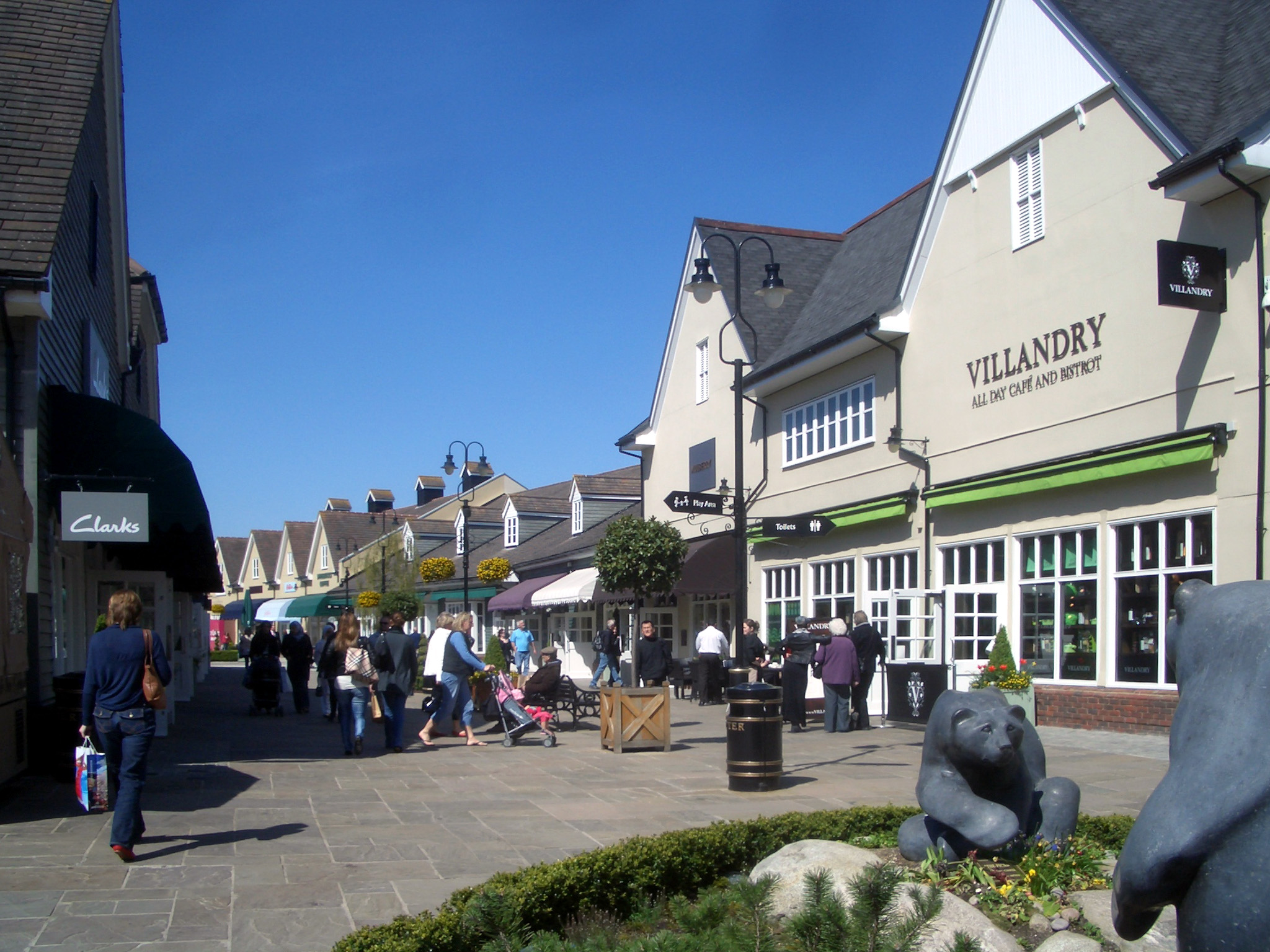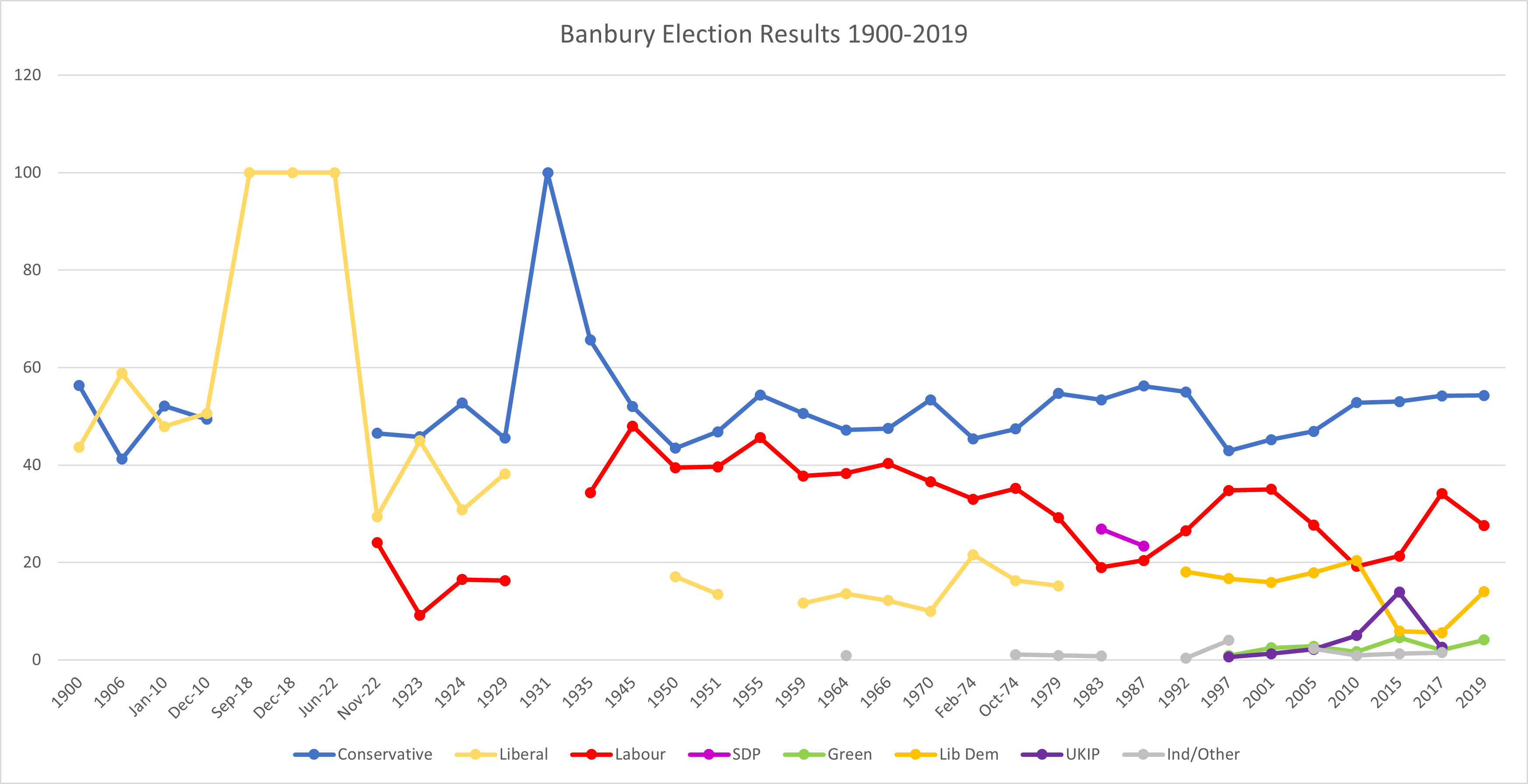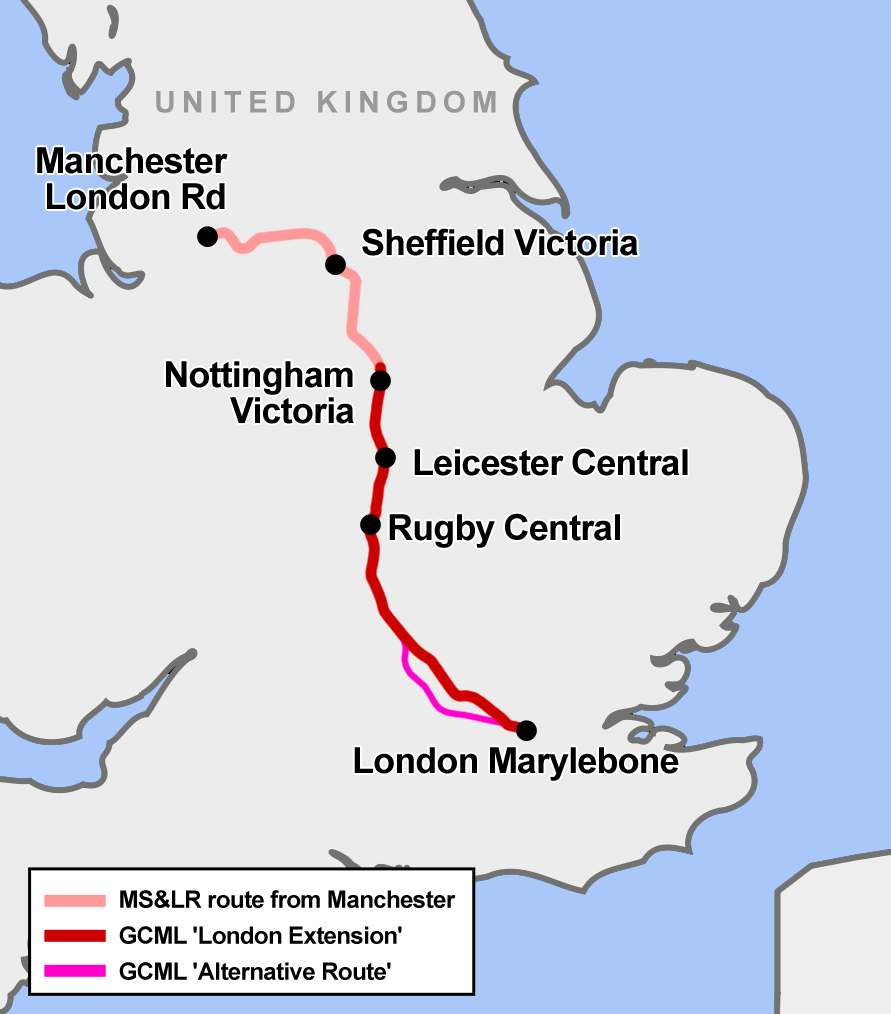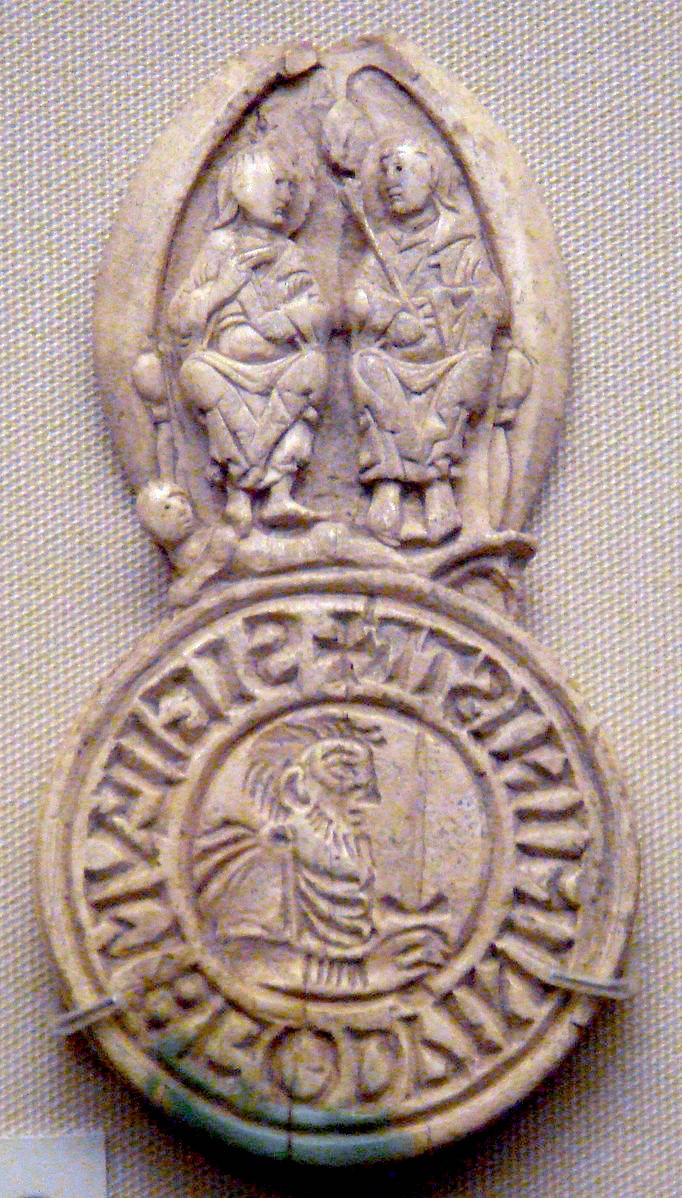|
Finmere
Finmere is a village and civil parish in Oxfordshire, south of the River Great Ouse. It is on the county boundary with Buckinghamshire, almost west of Buckingham and just over east of Brackley in Northamptonshire. The 2011 Census recorded the parish's population as 466. Archaeology In 2000 archaeologists found evidence of Bronze Age, Iron Age and Roman activity in Finmere Quarry about west of the village. Five early Bronze Age cremation pits were excavated, and from one pit two collared urns were recovered. The cremations were dated to about 2040 to 1880 BC. The site of a late Iron Age settlement was found west of the cremation pits and just east of the trackbed of the former Great Central Main Line railway. The settlement consisted originally of a number of roundhouses packed close together in a straight line, and then developed in phases with later structures overlapping the sites of some of the earlier ones. Enclosures, presumably to contain livestock, were created ... [...More Info...] [...Related Items...] OR: [Wikipedia] [Google] [Baidu] |
Buckingham
Buckingham ( ) is a market town in north Buckinghamshire, England, close to the borders of Northamptonshire and Oxfordshire, which had a population of 12,890 at the 2011 Census. The town lies approximately west of Central Milton Keynes, south-east of Banbury, and north-east of Oxford. Buckingham was the county town of Buckinghamshire from the 10th century, when it was made the capital of the newly formed shire of Buckingham, until Aylesbury took over this role early in the 18th century. Buckingham has a variety of restaurants and pubs, typical of a market town. It has a number of local shops, both national and independent. Market days are Tuesday and Saturday which take over Market Hill and the High Street cattle pens. Buckingham is twinned with Neukirchen-Vluyn, Germany and Mouvaux, France. History Buckingham and the surrounding area has been settled for some time with evidence of Roman settlement found in several sites close the River Great Ouse, including a temple ... [...More Info...] [...Related Items...] OR: [Wikipedia] [Google] [Baidu] |
Cherwell (district)
Cherwell ( ) is a local government district in northern Oxfordshire, England. The district takes its name from the River Cherwell, which drains south through the region to flow into the River Thames at Oxford. Towns in Cherwell include Banbury and Bicester. Kidlington is a contender for largest village in England. The district was formed on 1 April 1974, under the Local Government Act 1972, by a merger of the municipal borough of Banbury, Bicester urban district, Banbury Rural District and Ploughley Rural District. Geography The Northern half of the Cherwell district consists mainly of soft rolling hills going down towards the River Cherwell, but the southern half of the district around Bicester is much flatter. Much of the district is soft rolling hills with the northwest of the district lying at the northern extremity of the Cotswolds. Transport Much of the district is within easy reach of the M40, with junctions 9, 10 and 11 in the district. It also has good rail links w ... [...More Info...] [...Related Items...] OR: [Wikipedia] [Google] [Baidu] |
Banbury (UK Parliament Constituency)
Banbury, also informally known as Banbury and North Oxfordshire, is a constituency in Oxfordshire created in 1553 and represented in the House of Commons of the UK Parliament since 2015 by Victoria Prentis of the Conservative Party. She currently serves as Attorney General for England and Wales. In terms of electorate, Banbury was the 16th largest constituency in the United Kingdom at the time of the 2015 general election. Constituency profile The constituency has relatively high economic dependence on agriculture, as well as modern industry (particularly motorsport), research and development, public services and, to a lesser extent, defence. It contains two large market towns, Banbury and Bicester, where the majority of the electorate live. It is a partly rural seat, with the northwest of the constituency on the edge of the Cotswolds. The area has experienced significant urban growth and is popular with commuters who favour its fast transport links to Birmingham, Oxford a ... [...More Info...] [...Related Items...] OR: [Wikipedia] [Google] [Baidu] |
Great Central Main Line
The Great Central Main Line (GCML), also known as the London Extension of the Manchester, Sheffield and Lincolnshire Railway (MS&LR), is a former railway line in the United Kingdom. The line was opened in 1899 and built by the Great Central Railway running from Sheffield in the North of England, southwards through Nottingham and Leicester to Marylebone in London. The GCML was the last main line railway to be built in Britain during the Victorian period. Built by the railway entrepreneur Edward Watkin with the aim to run as a fast trunk route from the North and the East Midlands to London and the south of England. Initially not a financial success, it recovered under the leadership of Sam Fay. Although initially planned for long-distance passenger services, in practice the line's most important function became to carry goods traffic, notably coal. In the 1960s, the line was considered by Dr Beeching as an unnecessary duplication of other lines that served the same places, especial ... [...More Info...] [...Related Items...] OR: [Wikipedia] [Google] [Baidu] |
Brackley
Brackley is a market town and civil parish in West Northamptonshire, England, bordering Oxfordshire and Buckinghamshire, from Oxford and from Northampton. Historically a market town based on the wool and lace trade, it was built on the intersecting trade routes between London, Birmingham, the Midlands, Cambridge and Oxford. Brackley is close to Silverstone and home to the Mercedes AMG Petronas F1 Team. History The place-name 'Brackley' is first attested in the Domesday Book of 1086, where it appears as ''Brachelai''. It appears as ''Brackelea'' in 1173 and as ''Brackeley'' in 1230 in the Pipe Rolls. The name means 'Bracca's glade or clearing'. Brackley was held in 1086 by Earl Alberic, after which it passed to the Earl of Leicester, and to the families of De Quincy and Roland. In the 11th and 12th centuries Brackley was in the Hundred of Odboldistow and in the Manor of Halse. Richard I (The Lionheart) named five official sites for jousting tournaments so that such events ... [...More Info...] [...Related Items...] OR: [Wikipedia] [Google] [Baidu] |
United Kingdom Census 2011
A Census in the United Kingdom, census of the population of the United Kingdom is taken every ten years. The 2011 census was held in all countries of the UK on 27 March 2011. It was the first UK census which could be completed online via the Internet. The Office for National Statistics (ONS) is responsible for the census in England and Wales, the General Register Office for Scotland (GROS) is responsible for the census in Scotland, and the Northern Ireland Statistics and Research Agency (NISRA) is responsible for the census in Northern Ireland. The Office for National Statistics is the executive office of the UK Statistics Authority, a non-ministerial department formed in 2008 and which reports directly to Parliament. ONS is the UK Government's single largest statistical producer of independent statistics on the UK's economy and society, used to assist the planning and allocation of resources, policy-making and decision-making. ONS designs, manages and runs the census in England an ... [...More Info...] [...Related Items...] OR: [Wikipedia] [Google] [Baidu] |
Woodpecker
Woodpeckers are part of the bird family Picidae, which also includes the piculets, wrynecks, and sapsuckers. Members of this family are found worldwide, except for Australia, New Guinea, New Zealand, Madagascar, and the extreme polar regions. Most species live in forests or woodland habitats, although a few species are known that live in treeless areas, such as rocky hillsides and deserts, and the Gila woodpecker specialises in exploiting cacti. Members of this family are chiefly known for their characteristic behaviour. They mostly forage for insect prey on the trunks and branches of trees, and often communicate by drumming with their beaks, producing a reverberatory sound that can be heard at some distance. Some species vary their diet with fruits, birds' eggs, small animals, tree sap, human scraps, and carrion. They usually nest and roost in holes that they excavate in tree trunks, and their abandoned holes are of importance to other cavity-nesting birds. They sometimes com ... [...More Info...] [...Related Items...] OR: [Wikipedia] [Google] [Baidu] |
Towcester
Towcester ( ) is an affluent market town in Northamptonshire, England. It currently lies in West Northamptonshire but was the former administrative headquarters of the South Northamptonshire district council. Towcester is one of the oldest continuously inhabited settlements in the country. It was the Roman town of Lactodurum, located on Watling Street, today’s A5. In Saxon times, this was the frontier between the kingdom of Wessex and the Danelaw. Towcester features in Charles Dickens's novel ''The Pickwick Papers'' as one of Mr Pickwick's stopping places on his tour. The local racecourse has hosted many national horseracing events. Etymology Towcester comes from the Old English ''Tōfeceaster''. ''Tōfe'' refers to the River Tove; Bosworth and Toller compare it to the "Scandinavian proper names" ''Tófi'' and '' Tófa''. The Old English ''ceaster'' comes from the Latin ''castra'' ("camp") and was "often applied to places in Britain which had been Roman encampments." T ... [...More Info...] [...Related Items...] OR: [Wikipedia] [Google] [Baidu] |
Toponymy
Toponymy, toponymics, or toponomastics is the study of ''toponyms'' (proper names of places, also known as place names and geographic names), including their origins, meanings, usage and types. Toponym is the general term for a proper name of any geographical feature, and full scope of the term also includes proper names of all cosmographical features. In a more specific sense, the term ''toponymy'' refers to an inventory of toponyms, while the discipline researching such names is referred to as ''toponymics'' or ''toponomastics''. Toponymy is a branch of onomastics, the study of proper names of all kinds. A person who studies toponymy is called ''toponymist''. Etymology The term toponymy come from grc, τόπος / , 'place', and / , 'name'. The ''Oxford English Dictionary'' records ''toponymy'' (meaning "place name") first appearing in English in 1876. Since then, ''toponym'' has come to replace the term ''place-name'' in professional discourse among geographers. Toponym ... [...More Info...] [...Related Items...] OR: [Wikipedia] [Google] [Baidu] |
Old English
Old English (, ), or Anglo-Saxon, is the earliest recorded form of the English language, spoken in England and southern and eastern Scotland in the early Middle Ages. It was brought to Great Britain by Anglo-Saxon settlement of Britain, Anglo-Saxon settlers in the mid-5th century, and the first Old English literature, Old English literary works date from the mid-7th century. After the Norman conquest of 1066, English was replaced, for a time, by Anglo-Norman language, Anglo-Norman (a langues d'oïl, relative of French) as the language of the upper classes. This is regarded as marking the end of the Old English era, since during this period the English language was heavily influenced by Anglo-Norman, developing into a phase known now as Middle English in England and Early Scots in Scotland. Old English developed from a set of Anglo-Frisian languages, Anglo-Frisian or Ingvaeonic dialects originally spoken by Germanic peoples, Germanic tribes traditionally known as the Angles, Sa ... [...More Info...] [...Related Items...] OR: [Wikipedia] [Google] [Baidu] |
Thegn
In Anglo-Saxon England, thegns were aristocratic landowners of the second rank, below the ealdormen who governed large areas of England. The term was also used in early medieval Scandinavia for a class of retainers. In medieval Scotland, there were local officials known as thanes. Etymology The Old English (, "man, attendant, retainer") is cognate with Old High German and Old Norse ("thane, franklin, freeman, man"). The thegn had a military significance, and its usual Latin translation was , meaning soldier, although was often used. ''An Anglo-Saxon Dictionary'' describes a thegn as "one engaged in a king's or a queen's service, whether in the household or in the country". It adds: "the word ... seems gradually to acquire a technical meaning, ... denoting a class, containing several degrees", but what remained consistent throughout was its association with military service. Origins The precursor of thegn was the ''gesith'', the companion of the king or great lord, ... [...More Info...] [...Related Items...] OR: [Wikipedia] [Google] [Baidu] |
Norman Conquest Of England
The Norman Conquest (or the Conquest) was the 11th-century invasion and occupation of England by an army made up of thousands of Normans, Norman, Duchy of Brittany, Breton, County of Flanders, Flemish, and Kingdom of France, French troops, all led by the Duke of Normandy, later styled William the Conqueror. William's claim to the English throne derived from his familial relationship with the childless Anglo-Saxon king Edward the Confessor, who may have encouraged William's hopes for the throne. Edward died in January 1066 and was succeeded by his brother-in-law Harold Godwinson. The Norwegian king Harald Hardrada invaded northern England in September 1066 and was victorious at the Battle of Fulford on 20 September, but Godwinson's army defeated and killed Hardrada at the Battle of Stamford Bridge on 25 September. Three days later on 28 September, William's invasion force of thousands of men and hundreds of ships landed at Pevensey in Sussex in southern England. Harold march ... [...More Info...] [...Related Items...] OR: [Wikipedia] [Google] [Baidu] |







